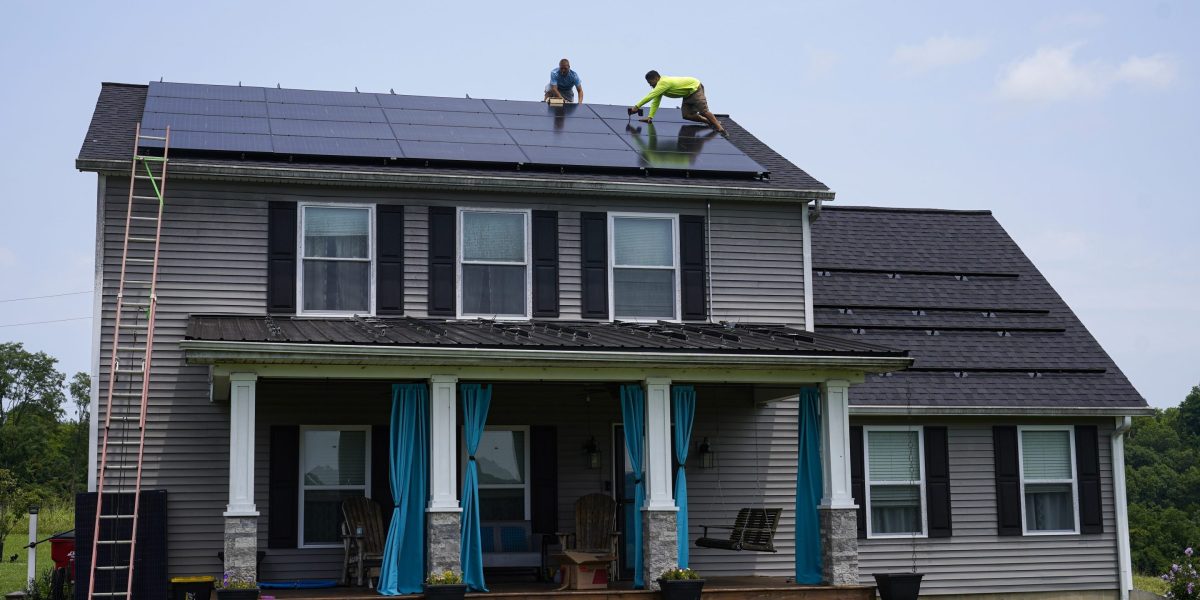Solar rooftops gain traction as electric vehicles owners look to skip paying for electricity or gasoline: ‘Solar just makes sense’::Residential solar is gaining traction in the U.S., with about 4.5 million homes now with solar rooftops.
Too bad this is for a person that:
- has enough income to afford an EV
- has a house.
- has enough income to afford the initial cost of the solar panels and installation.
Sadly most dont
I could probably afford one of the panels to keep in my apartment until I’m evicted.
This is all true, and yet it’s still a good thing.
The more people invest in this stuff the cheaper it will get.
In many cases the cost of a loan for solar panels is roughly equivalent to your monthly electric bill. I actually spend less on my loan than I did with the utility company. Of course you have a valid point overall, but I bring this up because many people are not aware that the cost difference can be pretty minimal or even to your benefit.
You can also buy just the panels and install them yourself if youre handy. They are generally just rails you bolt to a support beam in your roof. Mount the rails, water seal the penetration points, rack the panels, plug one into another, drill and seal an ingress hole for the wiring.
Instead of paying 30-40k for an installer to do it all, you can likely pay 5-10k for panels/inverters/tie in box and another 5k for an electrician to wire it all in.
Okay, but unless you have a proper harness and other safety equipment, you face a heavy risk of severely, likely permanently, injuring yourself if you slip up.
Hmmm I wonder if I still get the rebates if I diy it. Ah well, I suppose it doesn’t matter until the two maples in front of my neighbor’s house fall down.
You still have to buy the panels/etc. i dont see why they wouldn’t apply, but I haven’t done it yet so I can’t answer that unfortunately.
Putting panels on roofs is the most expensive way to do solar, anyway. It’s a custom job every time, and doesn’t take advantage of economies of scale.
Putting them in big fields is far cheaper. If you want to stick it to traditional power utilities, then look at community solar.
Also you need to keep them clean to maintain efficiency. In a field that’s easy - you can probably just employ the landowner and buy an attachment for his tractor. On the roof there isn’t really any good way of automating it, and some rooftops aren’t accessible for a window washer and a long brush.
Short term this is true, but if everyone does this, and we have the giant increased solar capacity we’re expecting, we’ll hit the limits of our electrical transmission capabilities.
Rooftop solar puts the generation at the same location as the consumption eliminating the transmission issue. Further, communities that have even a small percent of rooftop solar installs that also push their excess back to the grid could actually reduce the transmission challenge even further.
No, that’s not how it works. That part of the grid was designed for taking power, not generating power. Getting it to do otherwise is a huge headache for power companies. If everyone did it, the grid would fall apart.
A typical US home will need to upgrade from 100A to 200A service to have significant solar service, covering around 75% to 90% of the home’s power usage. This is because the panel needs to be rated for 120% of the maximum output of the panels to meet the National Electric Code.
The first few people in your neighborhood will be able to do that no problem. The electric company likely has excess capacity built in already. As a few more start to do it, though, that excess capacity will dry up, and the local grid will need to be upgraded.
Conversely, adding capacity to handle a new field is relatively simple. You add a lot of stuff in one place. Since it all needs to be planned out ahead of time, you can predict its max output. Power companies know how to do that.
That’s not true at all.
Installations are mostly standardized.
Putting them in an empty field is a terrible use of valuable land in areas where people actually live, not to mention the costs of transportation.
Some farms are taking advantage of this though, look into “agrivoltaics” for more on that.
So what? Who owns a giant field to put them in other than power companies? If you own your home and own the panels, that’s your power. Even if it’s not enough to get off the grid entirely, you’re still saving money.
Look up community solar.
"4. Doesn’t live with an HOA that has banned solar roof panel installation (Source: My parents HOA in South Carolina)
Pretty sure that’s illegal.
Edit: Depends on the state.
https://www.cnet.com/home/energy-and-utilities/you-can-get-solar-panels-even-in-an-hoa-heres-how/




